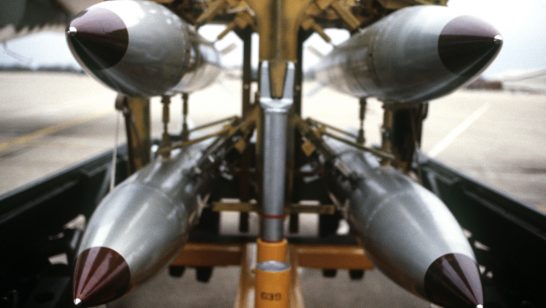
When it comes to meeting the pledge by NATO members to spend 2% of GDP on defence, Poland is in a relatively commendable position. It is one of very few Allies to have legislation which fixes the level of defence spending, currently at 1.95% of the previous year’s GDP. An amendment to increase this to 2% was submitted by the Minster for National Defence in November 2014 and is currently being processed by the Council of Ministers. Moreover, there is no serious political force that would question the need to spend 2% of GDP on defence. The major opposition party might even be willing to consider increasing it further. Additionally, the Polish public is largely supportive of a substantive part of the public budget being allocated to defence. This is undoubtedly related to the geopolitical location of country – at the gates between Western Europe and the famous Eurasian Heartland – which remains a powerful argument for taking military power seriously. This realistic appraisal is backed not only by Polish history, which provides an abundance of vivid incidents to strengthen that line of thinking, but also by more recent and varied forms of Russian sabre rattling in Poland’s vicinity.
Even if Polish elites fiercely debated the approach to Russia, the failure of the so-called Polish-Russian reset initiated by Prime Minister Donald Tusk’s government between 2009 and 2011 meant that there was broad agreement between the mainstream coalition and opposition parties regarding the need to increase military preparedness as a reaction to Putin’s policy in the East. Notwithstanding Estonia, Poland was also probably the first NATO country to re-emphasise the return to a territorial defence priority for its armed forces.
The first years after Poland’s accession into NATO were marked by the Polish military’s somewhat neophyte embrace of the crisis management paradigm. Quality over quantity, mobility over firepower, and force protection were marked as priorities for the development of expeditionary oriented capabilities. This approach could be explained as just plain “strategic parroting” of the post-Cold War military structure adopted by the more “senior” allies. But it could also partly stem from an assumption that in order to persuade other allies to address Polish security concerns, Poland had to invest in allied solidarity by being able to contribute actively to missions addressing challenges which did not affect Warsaw directly.
The first signs of a strategic U-turn from expeditionary to territorial defence priorities can be traced back to the initiative by President Bronisław Komorowski’s administration to enact specific legislation to secure funding for Air and Missile Defence systems, which was announced in 2012. Subsequently, the Ministry of Defence unveiled a new set of priorities for the December 2012 edition of the 10-year Modernisation Program of the Armed Forces of the Republic of Poland.
A shift of priorities included investment in new heavy artillery, new submarines, and air and missile defence systems, which were supposedly commissioned instead of the airlift capability and lighter equipment for expeditionary missions. Those steps were at that time explained chiefly as a reaction to the US Strategic Defence Guidelines of 2012, which emphasized the “pivot” towards Asia. At that time, they were criticised by some analysts as too inward-oriented, or even as a vote of non-confidence toward the US and NATO policy priorities.
The crisis that broke out just over a year later in Ukraine proved that Polish anxiety was not built on paranoia but on realistic assessment of intent of its biggest neighbour to the North East. The escalation of hostilities brought on by Russia’s creeping invasion did not therefore affect the already-agreed procurement program in a profound way. The main changes encompassed faster execution of the second coastal defence missile squadron contract, the order of a first batch of JASSM air-to-ground missiles, together with a software upgrade package for F-16 fleet, as well as acceleration of acquisition processes for attack helicopters and heavy MLRS systems.
Despite the absence of opposition to raising defence expenditure at the political level, there has been a debate pertaining to the specifics of the legislative proposal meant to secure realisation of the 2% spending goal between the Ministry of National Defence and the Chief of President’s National Security Bureau. Even more importantly, last year’s experiences cast some doubts as to whether the Polish Defence Ministry will be able to spend these new funds in an effective way.
When one looks at the actual execution of commendable plans and budgetary assumptions from previous years, the reality of the Polish defence spending appears somehow grimmer. The level of transparency and the time-span of acquisition programs in some cases leaves much to be desired. For example, the VIP aircraft replacement programme has not been executed despite 20 years of deliberations and the breakdown of the dedicated aircraft fleet. The setting of procurement priorities could also be questioned, as the overall modernization program can be defined as a loosely coordinated, bottom-up pile of acquisition requests. All those deficiencies led to the situation in which between 2008 and 2013 the Ministry of Defence was unable to spend over 3 billion USD earmarked for procurement.
There is some hope for improvement, as concepts like capabilities-based planning and full life cycle approach are slowly being introduced. Still, unless the political and civilian leadership takes a more active role in the process, it will take years before the situation is significantly improved.
The opinions articulated above represent the views of the author(s), and do not necessarily reflect the position of the European Leadership Network or any of its members. The ELN’s aim is to encourage debates that will help develop Europe’s capacity to address the pressing foreign, defence, and security challenges of our time.


